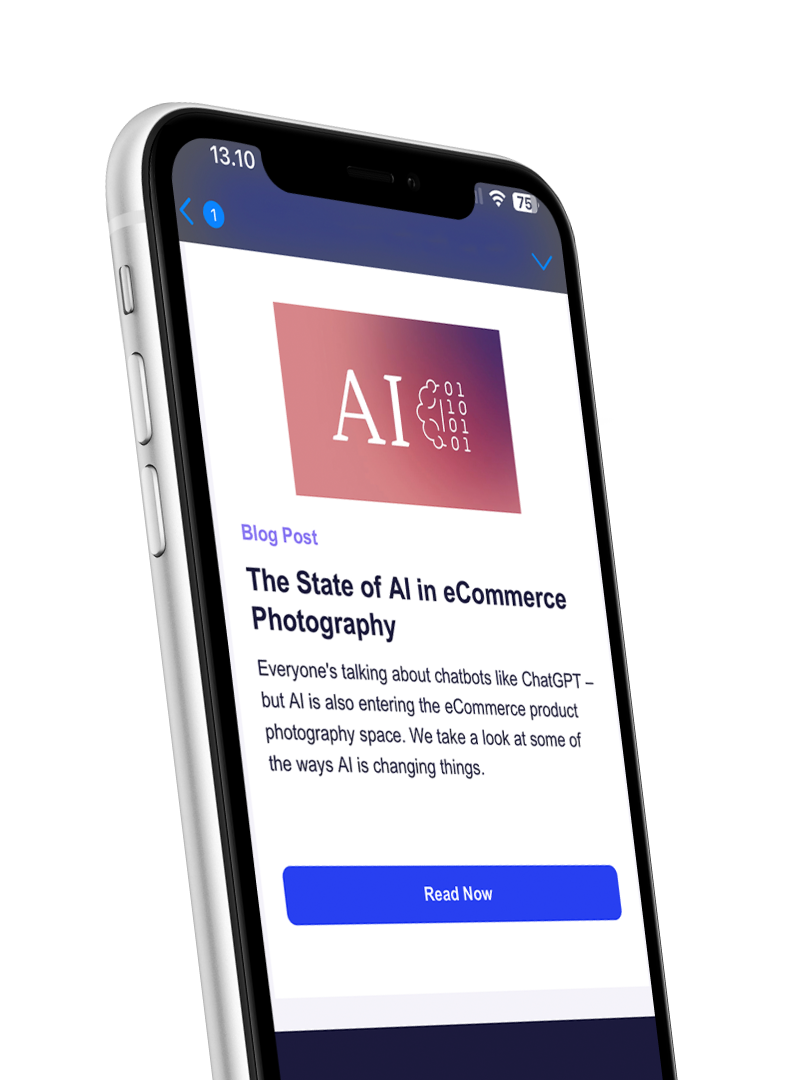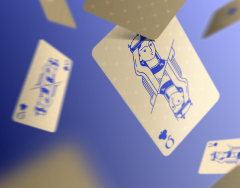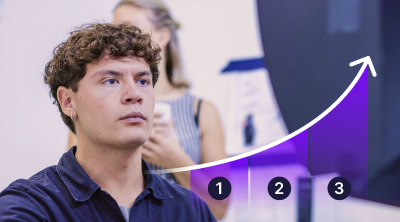Bestseller
Enabling Flow Photography to Increase Content Velocity
How a massive, multinational fashion company gained studio transparency, dramatically reduced lead time, and scaled operations in less than a month.

What were you doing before Creative Force?
The studio was run with Excel sheets lying around, Google Docs everywhere, and no proper overview – very manual processes. It was not scalable at all. Any opportunity to scale also meant an increase in headcount.
And scalability is what led you to look for a solution?
We reached a certain scale, and we envisioned our studio doubling in size over a certain period in terms of throughput. The only way to do this was by becoming more efficient and smarter in the ways that we work.
What was the vendor selection process like?
We did a really thorough RFP process. We started by doing basic research of 20 vendors. We did online research, had short calls, and did short demos with each of them until we narrowed it down to four or five that actually offered the kind of service that we needed.
We encouraged a group of people to collect a list of requirements. That team consisted of me, a couple of managers from our operational side – the ones running the warehouse with knowledge of supply chains and item movement – and several team leaders from the photo studio. We had a photography team lead, a post-production team lead, a quality checker, and the on-site operational studio manager.
We had a cross-led team collecting requirements and observing demos from the five final vendors. We had short calls. After each call, we got together and evaluated our initial feeling: “Okay, what do we think? Is this still worth pursuing?”
We eliminated one more vendor by doing that and were left with four. We then created a thorough RFP document with all of our requirements and a little about ourselves, and what we expect from the service and software. Then we went out to the four vendors and waited for proposals to come in.
"From the first demo, I thought ‘Wow, okay, these guys figured it out.'"
The Creative Force guys actually came into the process very last minute, almost too late, but managed to impress. I got a really good vibe with Thomas and Tejs from two initial calls. Super short demos without any introduction – they just went straight into it. From the first demo, I thought “Wow, okay, these guys figured it out.”
And the human factor played a big role – I felt an immediate trust with the guys on Creative Force. After a couple of evaluations, and financial negotiations, we were confident that Creative Force was the piece that we needed to move forward.
What were the major points in your requirements?
We had some really specific requirements. I think our final list consisted of 150 requirements. But keeping in mind our mission for the studio, the main thing was getting data insight to have a fully transparent overview of the studio. That was the first key thing.
"The main thing was getting data insight to have a fully transparent overview of the studio."
The second was to have as much automation as possible in order to support growth if we wanted to onboard more brands and products and step away from making decisions based on subjective data or feelings. We wanted to step away from that and move to full data mode and be able to analyze situations.
And you felt Creative Force was thinking about things the same way you were?
I definitely felt like we were speaking the same language. I felt like Creative Force understood our requirements immediately without any clarification needed. It was a sign that “Hey, you guys operate in the same field. You know what you're talking about. You understand the pain points without us needing to clarify in detail.” It sounded like the guys also had experience with other e-commerce photo studios. It was the speed we moved at and the responses we got and the demos we received. They were always full of commitment and understanding. We felt a strong commitment from the team.
"I felt like Creative Force understood our requirements immediately without any clarification needed."
What was onboarding like: the introduction of the software, the ramp-up period?
It was definitely quick. We kicked off even quicker than we thought. All the promises were kept from the RFP period, and deliverables were as well. There was a clear timeline communication that I really liked. We had a lot of face-to-face meetings, meaning one or more of the guys came to our headquarters or studio to really get a sense of our operation, and talk the same language. I think that helped and contributed a lot to keep up the speeds for implementation and onboarding. The plan that was set by the guys was also very clear.
Again, we went live on the day that we actually had planned to and that's not a given. With Creative Force it happened. We had onsite support when going live. So, yeah, really good. It was definitely fast.
"We went live on the day that we actually had planned to and that's not a given. With Creative Force it happened."
So you felt like the team you worked with really knew what they were talking about?
Absolutely. When you talk to these guys, you can talk at a high level or about the details. They have the vision, and they can bring expertise from other fields. They are happily sharing their knowledge, so they're not your typical consultant. They're the guys who are willing to help even further and share insights from different photo studios, and they're very process- and efficiency-oriented. And again – the human factor.
They were very quick to know how to speak to different audiences, adjusting the tone of voice or what they were saying between me, the studio manager, a photographer, or a retoucher. Very adaptable, easily adjusting to the environment they were in. Just natural with people.
And they're just honest. If I had to summarize, they are honest and they know what they're doing, absolutely. They know what they're doing, and that's not just in what they say, but also in how they behave and what's getting done. They have it under control from the customer side, and that’s only because they also have it under control internally.
How has bringing in Creative Force changed your operations?
It changed a lot, to be honest, and it changed quickly when we went live. You definitely change operations rapidly. Already now, just over a month in, we are making decisions based on data. We have the final KPIs, and we are monitoring the throughput per person on a very individual level but also on a team level. We are now monitoring the lead time of every image separately, also on a client level. We can communicate these numbers to the outside, and we can also use these numbers internally to make tweaks and improvements in the process either physically or systems-wise. That was something that we couldn't have done before. It was unthinkable because even if you made a change, there was no way to measure its impact on the process, the time, or the people.
"We are making decisions based on data."
How do you evaluate throughput?
Throughput sounds super simple. How many products has each person done? But it factors on many levels because it actually starts with the operations team. How many samples did they bring in? You have the photography team. How many of the products have they shot? You have the post-production team and how many products they have edited. Then we have the integration with Pixelz’s retouching service as well, where suddenly also see the numbers. Then, finally, we can see the numbers that our quality control team has checked or rejected.
Throughput is obviously a major KPI. What other KPIs do you have, and what are you doing with your data?
Throughput is one. Then it's lead time, and we are already looking into other things like model efficiency. The models that we're using, should we continue using them or not? We were never able to evaluate that before. We are also starting to look into how our items are aging in the inventory, even though they're just temporarily in. We're measuring our styling wardrobe usage and doing proper invoicing to the brands on that. The whole product – the physical product journey throughout the studio – which location has it touched, and who were the people that touched it? We have even more on the roadmap.
"We're getting so much data now that I’m just setting up dashboard after dashboard. It definitely changes a lot because it makes everything objective. All the decisions that are made."
We're getting so much data now that I’m just setting up dashboard after dashboard. It definitely changes a lot because it makes everything objective. All the decisions that are made. All the processes that are running. It allows us to review our P&L and finally make a very thorough pricing book based on our costs because we suddenly know exactly what we have done and with how many people. We can go into a new market and deliver reporting to clients that they can rely on, that is automatic, that is consistent. It really is a lot.
"It allows us to review our P&L and finally make a very thorough pricing book based on our costs because we suddenly know exactly what we have done and with how many people."
Are you giving your clients individual dashboards?
Yes. We deliver them individual dashboards that show throughput per day, and the lead time. We show them model efficiency, and we have plans to show which items we’re sending back to them just so they know what's coming back and when.
How are you creating the dashboards?
We are taking data out of Creative Force ourselves and we are using Power BI to visualize everything. It’s easy because Creative Force has integrated with a company called Looker. It's an industry-leading company in terms of reporting and data visibility, so we are very happy about that. It allows us to get any data that is available in any format we want, in any location we want, and at any frequency that we want. On top of that, we can schedule exports. It's a very flexible solution. For people working with data, having such a high ranking top-of-the market solution is really, really beneficial because it makes it just so reliable.
"It allows us to get any data that is available in any format we want, in any location we want, and at any frequency that we want. On top of that, we can schedule exports."
How has your lead time changed?
Our lead time used to be about six times longer from the first picture until the upload. Uploads for us are when we’re completely done with the image. We cut our lead time by more than a half within 2nd week with Creative Force. We are planning to cut it by another half within the month.
The powerful thing is that when you're using the software and you have the data on your side, you know exactly which toggles to turn to get even more out of it because it's just so easy and natural to use.
"We cut our lead time by more than half within the 2nd week with Creative Force. We are planning to cut it by another half within the month."
What was your go-live timeline?
We did the RFP process in April, and we had the goal to go live by end of June. So from saying, "Hey, guys, we're going to do it with you," until us actually using it in the studio: two months. For software that's really fast, actually. We could have done it earlier probably, but we wanted to have certain features that would support our studio. Creative Force promised they were going to do it, and they did, and they kept us up to date throughout the whole two-month period, which gave us more and more confidence that we were doing the right thing.
It's full transparency, sharing the development roadmap, talking openly about it, and sharing also maybe some workarounds for the initial phase. It all worked out and we went live exactly when we had to. Initially, before we got to know Creative Force, we had planned to onboard only one of our brands onto the software just to see how it would go and not disturb too much of the business. But two weeks before we had to go live, we had enough confidence in the setup that we decided to do a complete changeover overnight, and it paid off.
"We had planned to onboard only one of our brands onto the software just to see how it would go and not disturb too much of the business. But two weeks before we had to go live, we had enough confidence in the setup that we decided to do a complete changeover overnight, and it paid off."
Did the data help you discover anything unexpected?
For us, it was an absolute eye-opener. It showed us, well, how bad at planning or prioritization we were at the beginning. We had paper sheets lying next to each product or attached to each product, sometimes getting lost, or we somehow didn't know what an item was. What's the code of it? What's the deadline?
"It was an absolute eye-opener."
Now we have Creative Force labels that support us visually and physically when we're standing next to an item, and the information is equally reflected in the software. It gives us a better understanding and better ability to prioritize our operations. When one of our clients calls and asks, "Where's my item?", we can say exactly when it's going to be produced.
"Creative Force labels support us visually and physically when we're standing next to an item, and the information is equally reflected in the software."
You can reliably track a product’s progress at a glance?
It's reliable, because Creative Force gives us the transparency of Kanban boards. It's a very agile way of working. It's a methodology that we definitely breathe in our company and having it in the studio, a creative space, is a breakthrough.
People think you can’t break a creative process down into component steps, but as it turns out, it's possible. Pixelz has done it already with retouching. Creative Force shows you can do the exact same in photo production because, in the end, it's just an assembly line of images being produced with all the benefits of a typical supply chain. It's all process driven. Everything is a step-by-step approach. One person performs one task and hands it over to the next one, and so on.
How does it help creatives?
It is a tool for creatives. You can see that in how the interface looks. It's slick. It's a very modern solution. It has all these satisfying little features in it where numbers go up the more you have done today, which is motivating.
A positive element for end users is that you also remove the element of constantly having discussions. “Okay, how do we treat this item? How did we treat that item last time?”
There's no need to speculate or have long meetings about it. There's a whole history there with how we've treated all these similar products in the past. It's all in black and white in the window presented next to the item, or next to the image available. We can be more efficient. All teams suddenly speak the same language and work on the same quality standard.
"You suddenly are aligned not just as a team, but as a whole studio."
For example, we found that before Creative Force our photographers, editors, and quality controllers were working on different standards, which meant that we had many discussions around quality, guidelines, and redoing products. Now there's one guideline, and we all follow it. It's really positive because you save a lot of discussions, and you suddenly are aligned not just as a team, but as a whole studio.
It's super reliable. The way it’s presented in Creative Force, it's clear. There's a best example and a worst example. Best example, that's how it should be. If it's slightly deviating from that, well, we all agree at least that it has to be redone.
Again, it just comes back to removing subjectivity. Creative Force is how we’re moving from subjective to objective.
"Creative Force is how we’re moving from subjective to objective."
How do you see Creative Force helping you acquire new clients?
I think the most important moment is when we have the next brand lined up and considering coming to our studio. I look forward to the moment when we can invite them to physically visit the studio and see not just how it looks, but what it's actually running on, which is Creative Force. I would like them to see that we have the process under control. We have a unified process. I would like to show them the dashboards we have built. And all of that with the sole purpose of showing the brand they shouldn’t be afraid of losing transparency and control over the process or image quality, because they’re actually getting more control and more transparency by handing over production to us.
"The brand shouldn’t be afraid of losing transparency and control over the process or image quality, because they’re actually getting more control and more transparency by handing over production to us."

We know creative operations – and we’re eager to share
Sign up for industry insights, event invites, educational podcasts, and product news.



